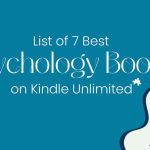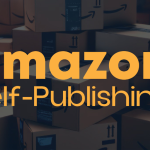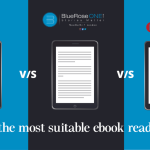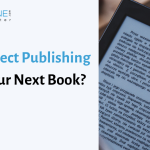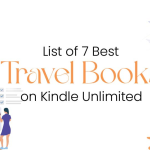In the ever-expanding digital landscape, authors face both unprecedented opportunities and challenges in reaching their target audience. Amazon, being a literary behemoth, provides a powerful platform for authors to showcase their work. One highly effective avenue within Amazon’s arsenal is its advertising platform.
Read: A Complete Guide on How to Create & Publish a Book on Amazon in 2023.
In this comprehensive guide, we’ll delve into the intricate world of Amazon ads for authors, exploring strategies, best practices, and the keys to unlocking success in book promotion.
Understanding Amazon Ads: Types of Amazon Ads
Amazon, as the world’s largest online retailer, provides authors with a powerful advertising platform to showcase their literary creations. Within this expansive ecosystem, authors can leverage three primary types of ads: sponsored products, sponsored brands, and product display ads.
- Sponsored Products: Sponsored products are the most commonly used Amazon ads among authors. These ads showcase individual book titles within search results and on product pages. When potential readers click on these ads, they’re directed to the book’s Amazon page. This type is ideal for authors seeking to enhance the visibility of specific books, potentially boosting sales and attracting a broader readership.
- Sponsored Brands: Sponsored Brands, previously known as Headline Search Ads, offer authors the opportunity to promote their brand or a collection of books. These ads typically appear at the top of search results, featuring a custom headline, logo, and multiple book titles. Sponsored brands are effective for authors looking to establish a brand presence and drive visibility for a series of books.
- Product Display Ads: Product Display Ads target readers based on their interests and browsing history. These ads can appear on book detail pages, Kindle e-readers, and other relevant placements. Product display ads are advantageous for authors aiming to target specific audiences or promote related books and merchandise.
Setting Up Your Campaign:
Creating a well-structured Amazon ad campaign is pivotal to its success. This involves several key steps:
- Selecting Campaign Goals: Before diving into the nitty-gritty, authors must define the goals of their campaign. Whether it’s increasing book sales, driving Kindle Unlimited reads, or simply boosting visibility, clarity on objectives informs subsequent decisions.
- Defining Target Keywords: Keywords act as the bridge between readers and books. Authors need to meticulously choose relevant keywords that align with their book’s genre, themes, and audience. This step ensures that ads are displayed to users who are genuinely interested in the content.
- Setting Budgets: Amazon ads operate on a bidding system, and authors need to establish daily or lifetime budgets. This financial allocation determines how much an author is willing to spend each day or throughout the campaign. Budget decisions should align with the author’s advertising goals and financial constraints.
- Crafting Compelling Ad Content: The visual and textual elements of an ad play a crucial role in capturing readers’ attention. Authors must invest time in creating eye-catching book covers, persuasive ad copy, and engaging headlines that resonate with their target audience.
By meticulously navigating through the options and decisions involved in types and campaign setup, authors can unlock the full potential of Amazon Ads, ensuring their literary masterpieces find the readership they deserve.
You may also like: 7 Top Rated Self-Help Books of all time in 2024
Crafting compelling ad content:
Eye-Catching Book Covers: In the realm of Amazon ads, an eye-catching book cover serves as a silent ambassador, beckoning potential readers to explore further. The adage “don’t judge a book by its cover” is ironically reversed in the advertising world, where the cover is the initial point of judgment. Authors must recognise the significance of this visual element and understand how to optimise book covers for maximum impact in Amazon ads.
- Importance of Visual Appeal: Humans are inherently visual beings, and the visual appeal of a book cover can significantly influence a reader’s decision to explore further. A striking book cover not only attracts attention but also communicates the genre, tone, and essence of the book. It serves as a visual promise, offering a glimpse into the narrative world.
- Optimising for Amazon Ads: When crafting book covers for Amazon ads, authors should consider the platform’s specific requirements. The cover must be clear, compelling, and legible, even in smaller formats. High-resolution images and vibrant colours can enhance visibility. Additionally, the cover should align with the genre expectations to attract the intended audience.
- Consistency Across Ads and Book Pages: Maintaining consistency between the ad’s visual elements and the book’s actual page is crucial. A potential reader clicking on the ad expects a seamless transition between the advertised cover and the book’s landing page. A mismatch may lead to confusion or disappointment, affecting the overall effectiveness of the ad campaign.
Captivating Ad Copy: Beyond the visual allure of book covers, the ad copy plays a pivotal role in conveying the book’s value proposition. Crafting captivating ad copy involves the art of concise and persuasive language to entice potential readers to take the next step.
- The Power of Taglines: Taglines are like literary invitations, succinctly summarising the essence of the book. Crafting a memorable tagline that captures the intrigue of the narrative can leave a lasting impression on readers. It should evoke curiosity and encourage further exploration.
- Compelling Descriptions: The book description is an author’s opportunity to narrate a compelling story in a condensed form. It should provide enough information to pique interest while maintaining an element of mystery. Descriptions should focus on the unique selling points, genre-specific appeal, and emotional journey readers can expect.
- Strategic Calls-to-Action (CTAs): A well-crafted CTA serves as a roadmap for readers, guiding them to the desired action. Whether it’s “Buy Now,” “Read for Free,” or “Discover the Mystery,” CTAs should align with the campaign’s objectives and create a sense of urgency or excitement.
Keyword Strategies:
- Building an Effective Keyword List: Constructing a robust keyword list is fundamental to the success of Amazon ads. It involves a strategic selection of words and phrases relevant to your book’s genre, ensuring that your ads reach the most pertinent audience. Begin by brainstorming a comprehensive list of potential keywords related to your book. Consider synonyms, variations, and long-tail keywords to capture a broad spectrum of search queries.
- Research and refinement: Use Amazon’s search bar and explore competitor books to identify relevant keywords. Leverage keyword research tools to uncover additional possibilities. Once you’ve compiled a list, refine it based on relevance, search volume, and competition. Aim for a balance between broad and specific keywords to maximise visibility.
- Grouping Keywords: Organise your finalised keywords into logical groups. Grouping allows for targeted ad campaigns, enabling you to tailor ad copy and bids for specific sets of keywords. This segmentation enhances the precision of your advertising efforts.
- Dynamic Keyword Targeting: Amazon’s algorithms introduce a dynamic element to keyword targeting, offering options like automatic targeting. Automatic targeting allows Amazon to identify relevant keywords based on your book’s content, genre, and other factors. Embracing dynamic targeting options can be strategic for refining campaigns over time.
- Automatic vs. Manual Targeting: In automatic targeting, Amazon’s algorithms decide which keywords trigger your ads. This can be an excellent starting point for identifying high-performing keywords. However, transitioning to manual targeting provides greater control. In manual mode, authors select specific keywords based on their insights and research.
- Refining Over Time: Dynamic targeting doesn’t mean a lack of control. Regularly review the performance of automatic targeting, identify successful keywords, and incorporate them into your manual campaigns. This iterative process allows you to adapt to changing market dynamics and user behaviour.
You may also like: Publish your book with Amazon Self-Publishing in 2024
Budgeting and bidding:
- Understanding Cost-Per-Click (CPC): Cost-Per-Click (CPC) is a pivotal concept in Amazon advertising. It refers to the amount you’re willing to pay when a potential reader clicks on your ad. Understanding CPC involves striking a balance between competitiveness and budget constraints. Set a CPC bid that aligns with your campaign goals and budget.
- Bidding Strategies: Amazon offers different bidding strategies, including dynamic bidding, which adjusts your bid based on the likelihood of conversion. Explore these strategies and choose the one that aligns with your objectives. Consider starting with a moderate bid to gauge performance before adjusting.
- Monitoring and Adjusting: The adaptability of Amazon ads allows authors to continuously monitor and adjust their campaigns for optimal performance. Regularly review key metrics, including click-through rates (CTR), conversion rates, and overall spend. Identify underperforming keywords and either adjust bids, pause keywords, or experiment with new ones. Data-driven adjustments ensure ongoing optimisation for success.
Advanced Tactics:
- Amazon Ad Analytics: Unlocking the full potential of Amazon ads requires a nuanced understanding of analytics. Dive into Amazon Ad Analytics to decipher crucial metrics and glean insights into campaign performance. Metrics like conversion rates, click-through rates (CTR), and impressions offer valuable feedback. Track how readers engage with your ads, understand what leads to conversions, and identify areas for improvement. Analysing this data empowers authors to make informed adjustments, optimising campaigns for better results.
- Conversion Rates and Optimisation: Conversion rates reveal the percentage of users who take the desired action, such as purchasing the book. A low conversion rate might indicate a misalignment between the ad and the book’s content. Experiment with ad copy, imagery, and targeting to enhance conversion rates. Continuous monitoring and adjustment based on analytics form the backbone of a successful Amazon ad strategy.
- Retargeting Strategies: Retargeting is a powerful strategy to re-engage potential readers who have interacted with your book but haven’t made a purchase. Explore retargeting options within Amazon’s advertising platform. Tailor ads specifically for users who visited your book’s page or clicked on the ad but didn’t convert. Utilise compelling visuals, limited-time offers, or additional incentives to encourage a return visit and conversion. Retargeting ensures that your book remains on the radar of interested readers, increasing the likelihood of conversion.
- Case Studies and Success Stories: Real-world examples breathe life into theoretical concepts. Explore successful Amazon ad campaigns through case studies and success stories. Analyse campaigns that achieved notable results, breaking down what worked, what didn’t, and the key takeaways. Case studies provide actionable insights, illustrating strategies that resonated with readers, effective keyword choices, and compelling ad creatives. Learning from the successes of others equips authors with practical knowledge to apply to their own promotional efforts.
- Common Pitfalls to Avoid: Success often involves learning from mistakes. Identify and navigate common pitfalls authors encounter in Amazon ads. Pitfalls may include ineffective keyword choices, poorly crafted ad copy, or misaligned targeting. Understanding these stumbling blocks allows authors to proactively avoid them. Guidance on optimising bids, refining targeting parameters, and crafting compelling ad content can help authors sidestep common pitfalls, fostering more effective and efficient Amazon ad campaigns.
Read: How to Create and Publish your Book on Apple Books in 2023?
In the vast digital marketplace, Amazon ads stand out as a potent tool for authors to elevate their books. This comprehensive guide equips authors with the knowledge and strategies needed to navigate the intricacies of Amazon ads successfully. With the right approach, authors can turn their literary dreams into Amazon bestsellers, one click at a time.










